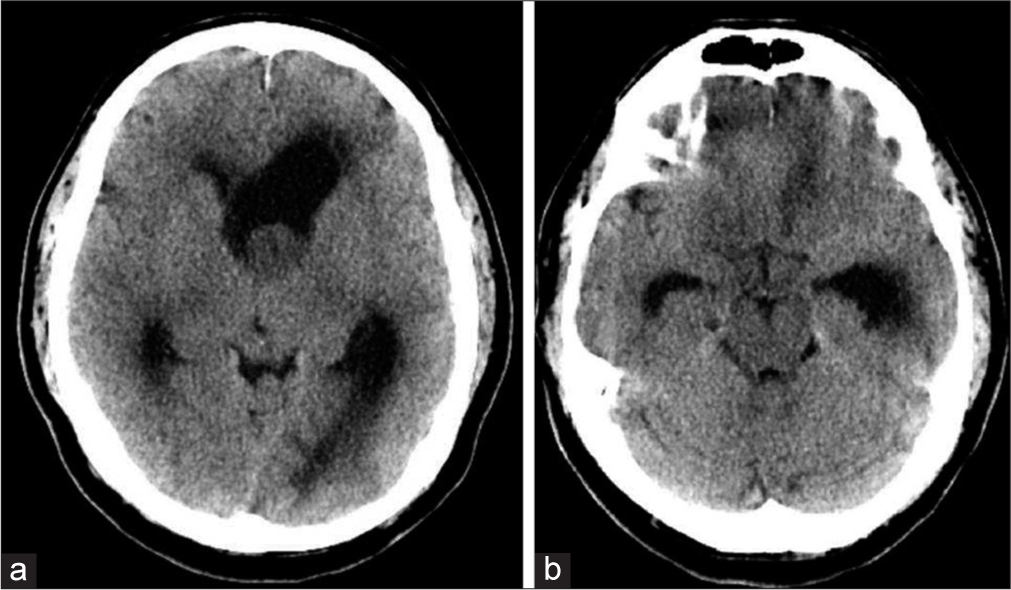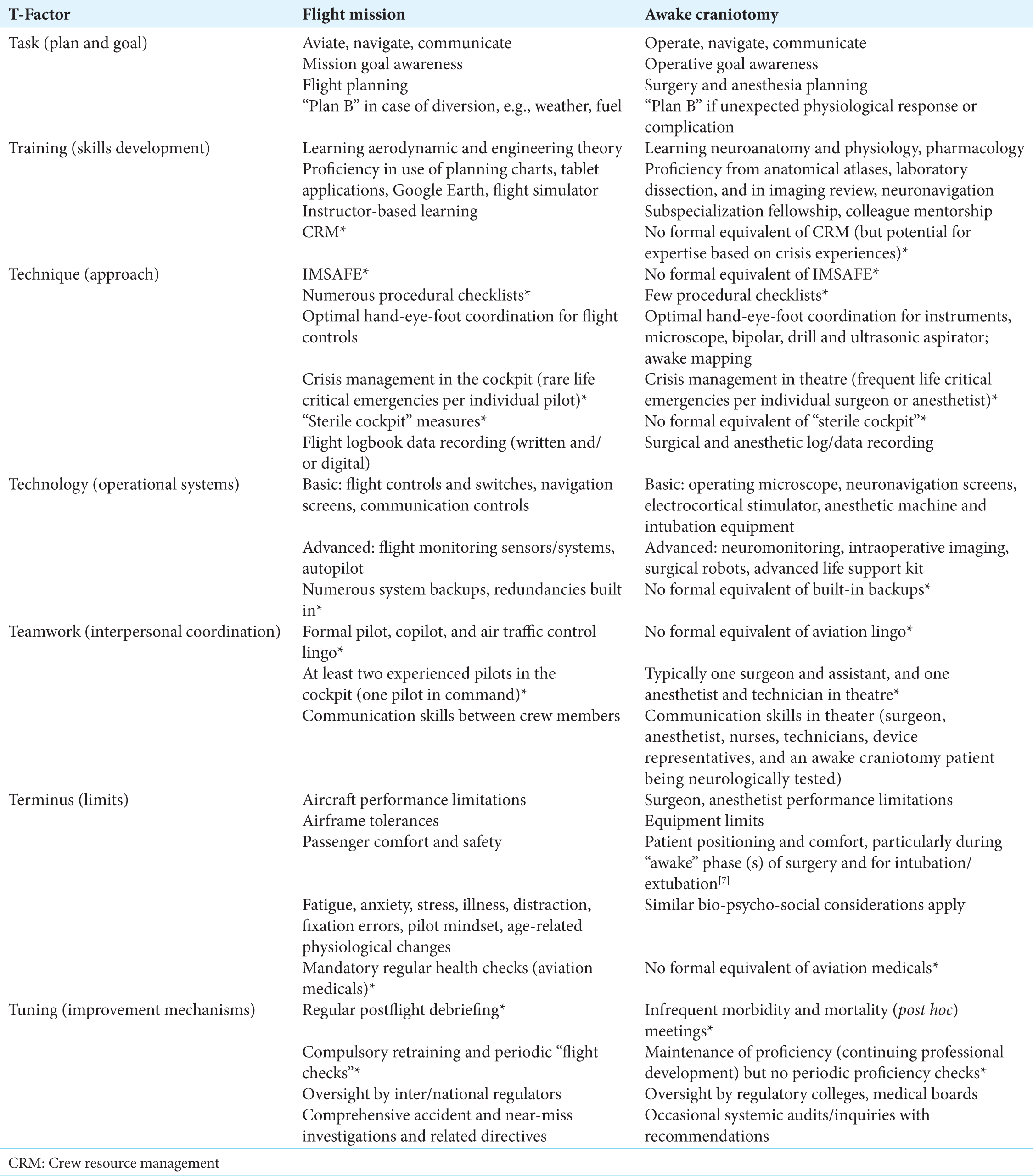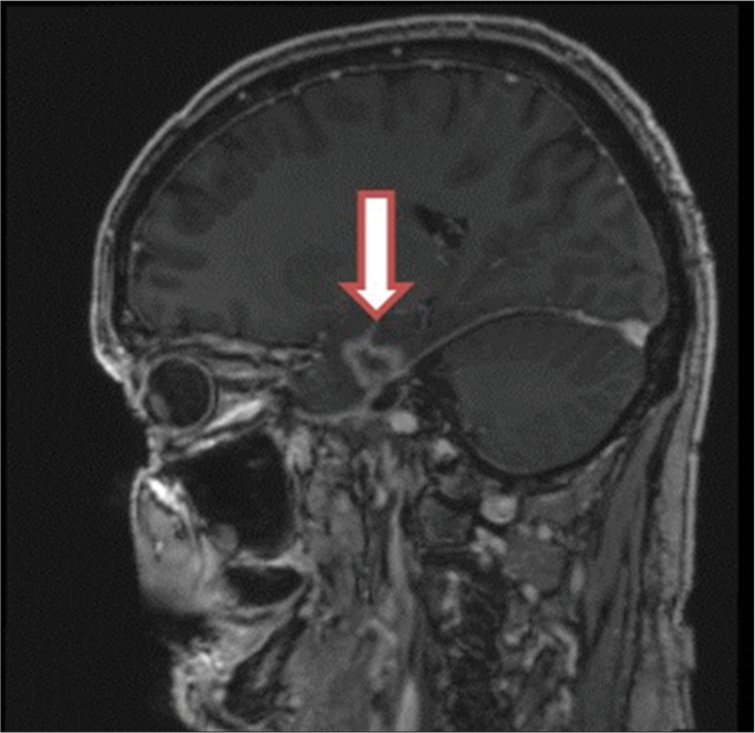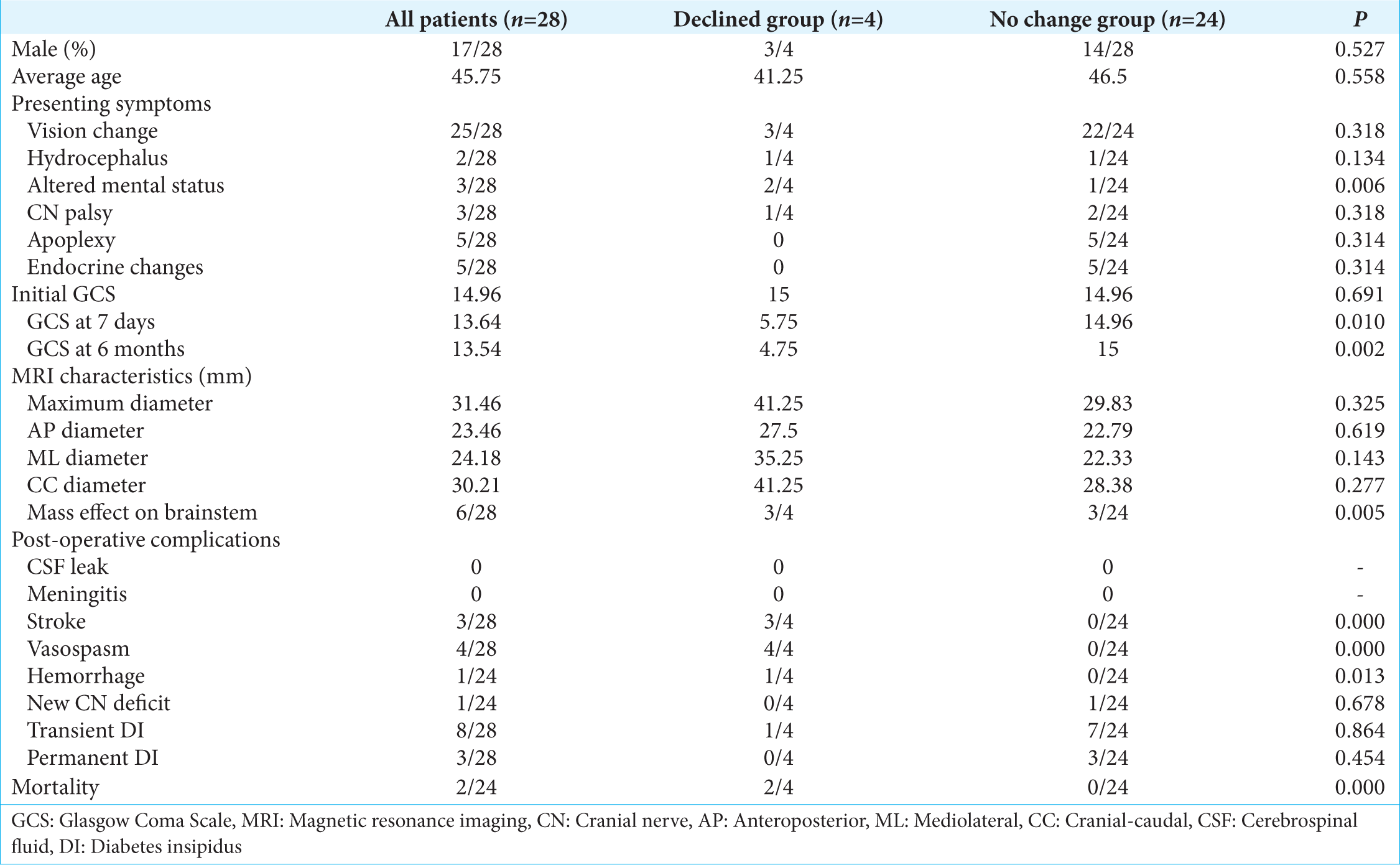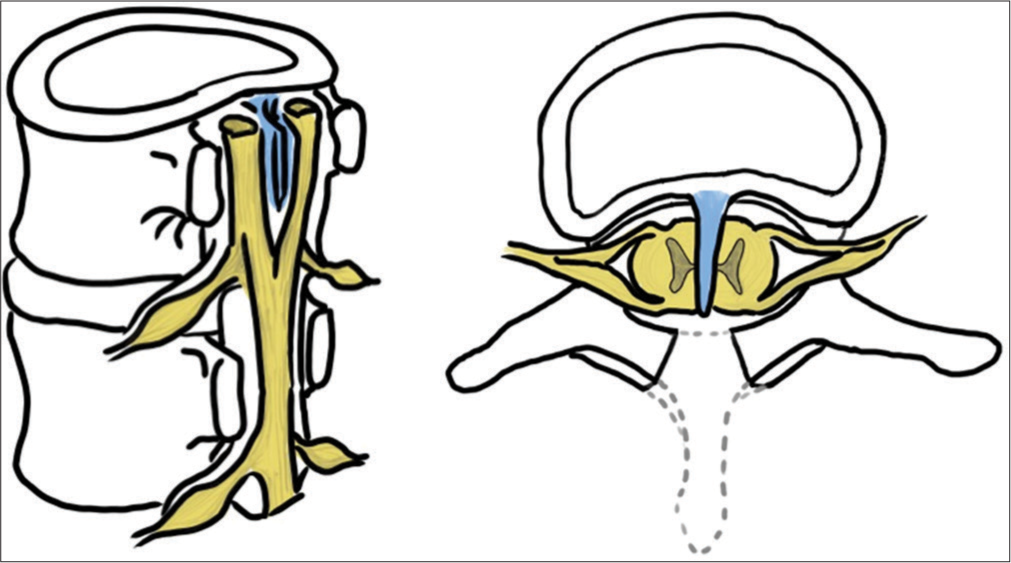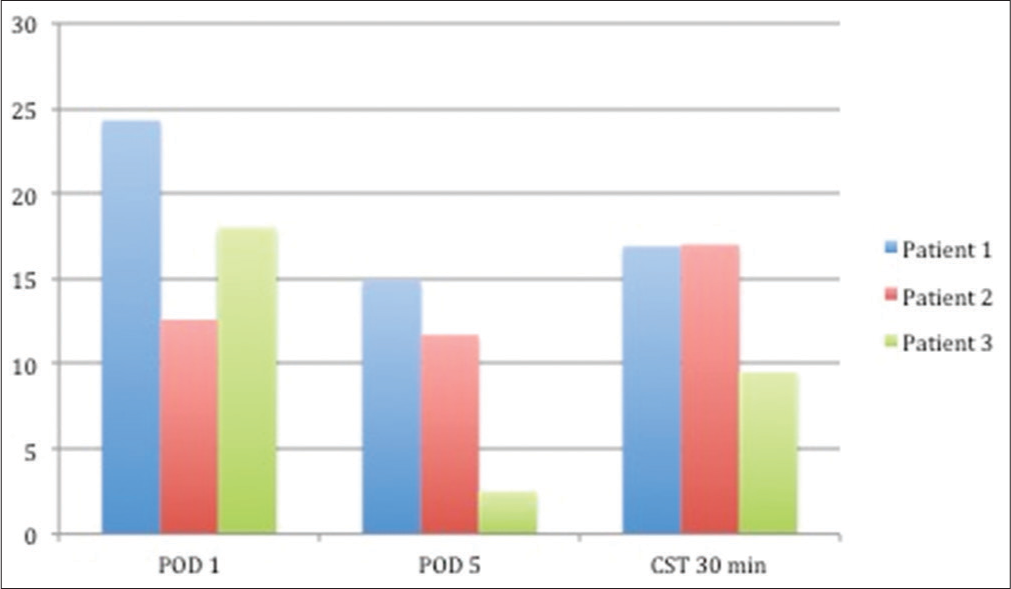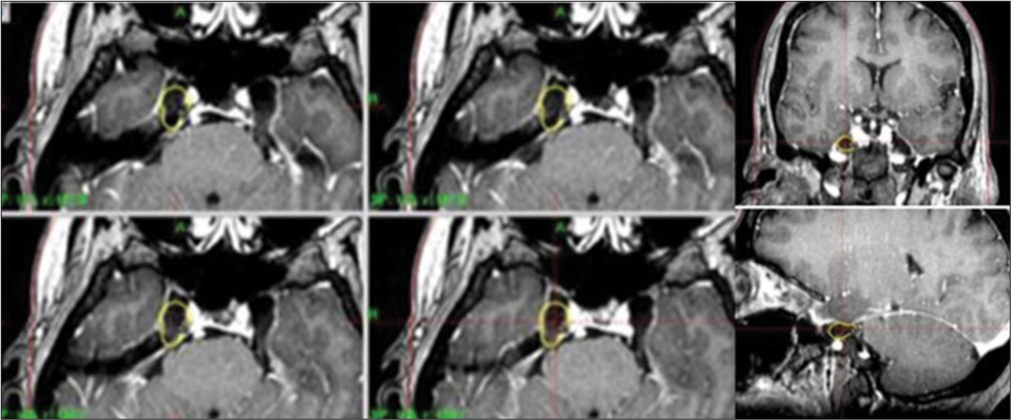Endoscopic resection of the third ventricular epidermoid cysts: A case review and review of literature
Date of publication: 07-Jun-2019
Background:Epidermoid cysts are benign, congenital lesions that originate from ectodermal cells, they are most commonly found in the cerebellopontine angle, but rarely in the ventricular system. There is limited literature regarding the different microsurgical techniques utilized to approach these lesions.
A noninvasive method for the estimation of increased intracranial pressure in patients with severe traumatic brain injury using optic nerve sheath diameter measured on computed tomography head
Date of publication: 07-Jun-2019
Background:Measurement of optic nerve sheath diameter (ONSD) using ocular ultrasonography has shown a promise in predicting increased intracranial pressure (ICP). However, this method is dependent on operator technique and equipment availability. We propose an alternative method of measuring ONSD and Marshall score grading by utilizing initial computed tomography (CT) head obtained on admission. We believe that such a technique could help predict patients requiring an invasive ICP monitor on admission.
Minimizing cortical disturbance to access ventricular subependymoma – A novel approach utilizing spinal minimally invasive tubular retractor system
Date of publication: 07-Jun-2019
Background:Subependymomas are rare benign tumors found primarily in the lateral and fourth ventricles. Patients become symptomatic when the tumor obstructs cerebrospinal fluid pathways. We present a novel minimally invasive technique for lateral ventricular subependymoma resection.
Spinal cord compression by multiple cysticercosis
Date of publication: 07-Jun-2019
Background:Neurocysticercosis (NCC) is the most common parasitic infection involving the central nervous system in endemic areas. Notably, spinal involvement occurs in only 0.7%–3% of patients.
Awake craniotomy versus piloting an aircraft: What medicine and aviation can learn from one another?
Date of publication: 07-Jun-2019
Skull base chordoma treated with proton therapy: A systematic review
Date of publication: 07-Jun-2019
Background:Chordoma located in the skull base is usually a challenging surgical condition. It is often not possible to achieve gross total resection. Residual tumors have been treated with adjuvant focal radiation therapy employing high-energy particles most commonly through proton beam. In this review, we systematically analyzed indications and outcomes of this treatment with respect to local control rates of the lesion and factors determining recurrence of skull base chordomas. In addition, we collected data on treatment-associated radiation-induced side effects.
Conditions associated with giant pituitary tumors at the time of surgery effecting outcome morbidity and mortality
Date of publication: 07-Jun-2019
Background:Surgical outcome prediction has assisted physicians in discussing surgical intervention or expectant management. While increasing pituitary tumor size would seem to be associated with increasing challenge of removal and associated complications, that relationship has not been borne in the literature.
Type I split cord malformation and tethered cord syndrome in an adult patient: A case report and literature review
Date of publication: 07-Jun-2019
Background: In a split cord malformation (SCM), the spinal cord is divided longitudinally into two distinct hemicords that later rejoin. This can result in a tethered cord syndrome (TCS). Rarely, TCS secondary to SCM presents in adulthood. Here, we present an adult female with Type I SCM resulting in TCS and a review of literature.
Postoperative day 1 versus postoperative day 5 morning cortisol for predicting an intact hypothalamic-pituitary axis: A cohort analysis
Date of publication: 07-Jun-2019
Background:A reliable standard for evaluating postoperative hypothalamic-pituitary-axis (HPA) function following transsphenoidal pituitary surgery (TSS) could reduce hospital stays and unnecessary prolonged steroid therapy. We retrospectively examined the predictive role of morning cortisol levels on long-term HPA function to develop an institutional protocol. Here, we report the results of this analysis, which is the first to report the predictive strength of multiple variables (i.e., timing of measurement and values of serum cortisol cutoffs) within the same cohort.
Gamma knife radiosurgery on the trigeminal ganglion for idiopathic trigeminal neuralgia: Results and review of the literature
Date of publication: 07-Jun-2019
Background: In the present study, we evaluate the results of gamma knife surgery (GKS) for the treatment of trigeminal neuralgia (TN) using the trigeminal ganglion (TG’) and the adjacent fibers of trigeminal nerve as a target.




